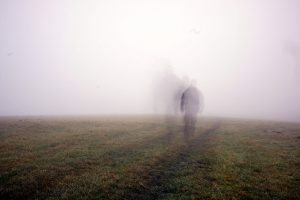Midge’s Point of View: Unacknowledged Subversion of the Symbolic in Hitchcock’s Vertigo
Laura Mulvey’s 1975 essay “Visual Pleasure and Narrative Cinema” includes a discussion of Alfred Hitchcock’s 1958 film Vertigo. While the discussion is relatively short, spanning less than a page, it makes important claims about the value of the film in psychoanalytic terms.
Sigmund Tzu and the Dream World
Delving deep into the psyche of Dora, Freud’s case history, Fragments of an Analysis of a Case of Hysteria (Dora), navigates the thoughts and dreams that course through her psyche to find, pick apart, and analyze the potential causes of grief and suffering that plague her daily life.
Eyes to Watch
Eyes are everywhere in the comic series Watchmen by Alan Moore and Dave Gibbons. From the eyes of every character to the pupil-like circles of clocks and “fallout shelter” signs, figures of vision can be found throughout.
The Souls of Black Folk and The Essentiality of Human Connection
Du Bois’ classic text The Souls of Black Folk does not at first read as a cohesive argument. Rather, each chapter offers a different style, a different purpose, and this makes for a complex and at times disjointed reading experience. The unifying factor in the text is the metaphor of the “Veil” – a metaphor which itself varies according to the scope of each chapter.
Anne Frank: The Young Girl and the Writer
When Hitler began his long rise to power in 1919 and promoted anti-Semitism across Europe, the world was devastated by the horror that ensued. Amongst the approximately 60 million people killed during the war, 11 million of them were Jews. Anne Frank’s The Diary of a Young Girl is representative of the fear under Nazi regime and of enduring humanity in times of suffering.
Where the Road Ends
Cormac McCarthy’s The Road explores the bleak and barren post-apocalyptic world of a father and his son and their journey to find sanctuary. As the father and son travel throughout the novel they travel farther and farther down the road. In this new world cannibalism is among the horrors have become normalized, and life in itself has become a tragedy.
The Person in the Picture: The Image and the Self of Esther Greenwood
Throughout The Bell Jar, Esther Greenwood is photographed many times. Sometimes the act of being photographed is equated with the objectification of Esther, which is to say, the photographer takes away Esther’s personhood and she becomes an object in the photograph.






